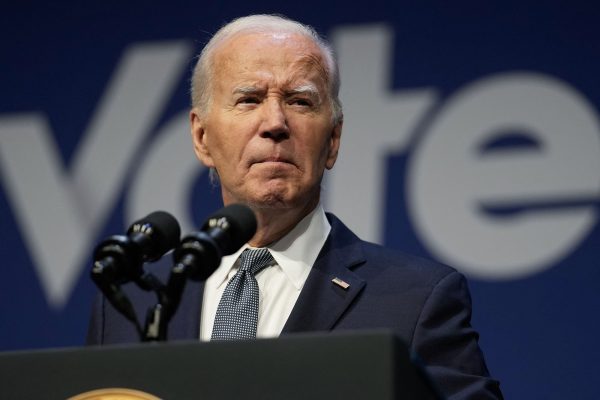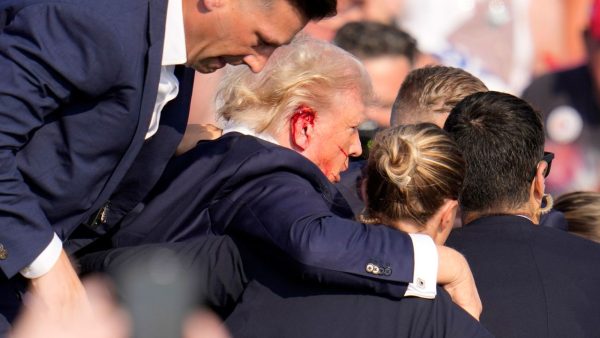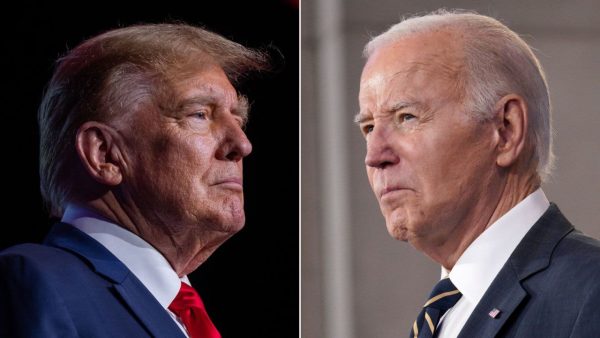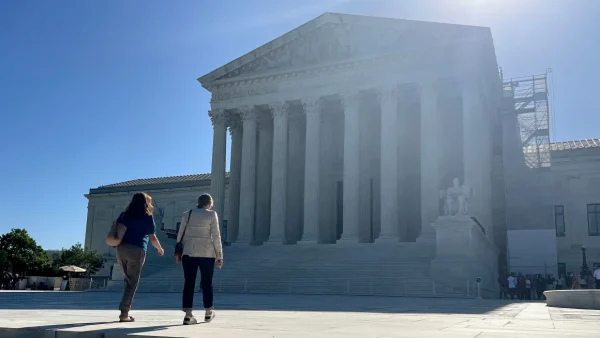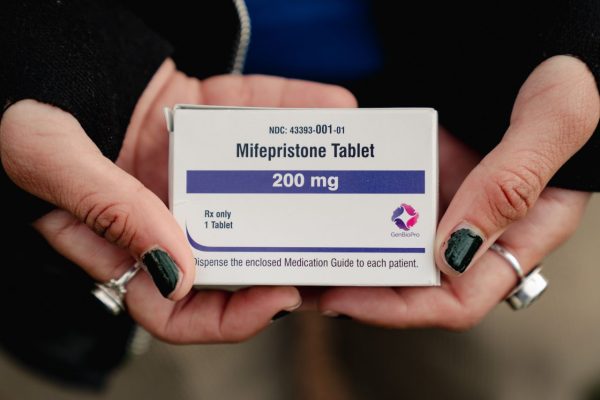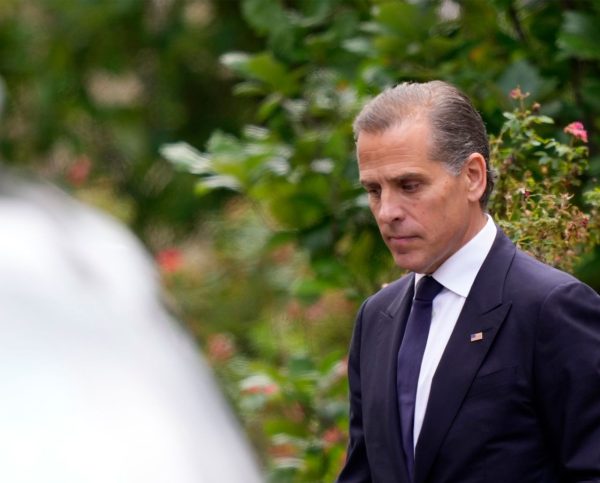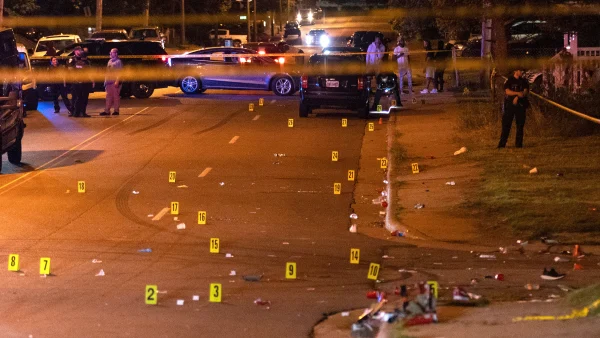Coronavirus variant on track to become dominant in Florida and California hot spots, testing company says
NEW ORLEANS, Jan. 19, 2021 — A memorial service for people who lost lives to COVID-19 is held in New Orleans, Louisiana, the United States, Jan. 19, 2021. (Photo by Lan Wei/Xinhua via Getty) (Xinhua/Lan Wei via Getty Images)
Jason Hanna, Madeline Holcombe and Michael Nedelman, CNN
February 4, 2021
(CNN) — A more contagious coronavirus variant is on the rise in the United States and could become dominant in hot spots like Florida and Southern California “within a few weeks,” according to a testing company that has helped identify the largest share of variant cases in the US.
The company, Helix, has been tracking evidence suggesting cases of B.1.1.7 — a strain first found in the UK — are on the rise, and not just a product of increased genetic sequencing across the country, Helix President Dr. James Lu told CNN late Wednesday.
“The rate of growth here in Florida and Southern California looks a lot like the type of growth that we have seen previously in the UK and Denmark … where B.1.1.7 became the predominant variant strain pretty quickly,” Lu said.
The US Centers for Disease Control and Prevention last month said modeling showed this variant could become the US’ predominant strain in March and could worsen the spread of the disease.
Rates of new coronavirus cases overall in the US have been dropping. The country has averaged about 136,900 new cases a day over the last week — the lowest average since November 12, according to Johns Hopkins University data.
But Dr. Anthony Fauci has suggested the US isn’t vaccinating people fast enough to stay ahead of new variants, and that could blunt efforts to keep bringing case levels down.
“If the variants and the mutations come, and start becoming dominant, then that’s going to obviate some of the effects of the vaccine,” Fauci, director of the National Institute of Allergy and Infectious Diseases, told CNN this week.
As for how Helix has tracked the B.1.1.7 variant, Lu referenced a small but growing number of samples showing a testing glitch, which signals the presence of a mutation in B.1.1.7. Not all of these samples are B.1.1.7, since the mutation can exist on its own.
There’s been an increasing rate of this glitch — known as S gene dropout — in places like Florida and Southern California. And an increasing proportion of these samples are being confirmed as B.1.1.7 once they’re genetically sequenced, Lu said.
“We’re in a race between the vaccine and the new strains,” Lu said. It’s unclear whether the pace of vaccination will prevent the strain from taking a foothold in places where it’s not already circulating, Lu added.
Helix is one of a number of commercial, academic and public health labs that share information with the CDC.
More than 540 cases of this variant have been found in 33 states, according to the CDC. Most are in Florida and California. The first US case was announced December 29, but the earliest known cases stretch back at least as far as mid-December.
Researchers have said that although the B.1.1.7 variant appears to be more transmissible than previous strains, it is not known to be more deadly or cause more severe disease.
The strain has also been found in at least 80 countries and territories around the globe, the World Health Organization said this week.
Two other strains are harder to detect, testing company says
Two other more-transmissible variants — first identified in South Africa (B.1.351) and Brazil (P.1) — have been much harder to locate, Lu told CNN Wednesday night.
That’s because the mutation that causes the “S gene droupout” glitch that helps Helix find B.1.1.7 cases is not present in the other two strains.
Beyond appearing more transmissible, the B.1.351 and P.1 strains also contain a different mutation that scientists worry could help the virus escape some of the antibody protection from vaccines or previous infection. Even so, experts say they expect vaccines will still work against the variants — especially when it comes to preventing severe disease and death.
“They’re not detectable with our level of sampling today,” Lu said of variants first identified in South Africa and Brazil. “So, most of the time, if we’re finding it, it’s serendipity right now. But that will change, if they become more prevalent.”
Last week, the first US cases of the B.1.351 strain were found in South Carolina. According to a state health official, these two cases were found during routine sequencing, but “the predominant strain that we are still seeing in our surveillance sequencing is the standard, or normal,” version of the virus. Maryland has also reported a handful of cases.
At least two cases of the P.1 strain linked to Brazil have been found in the US. Both patients live in the same household in Minnesota, and one had recently traveled to Brazil, according to the state’s health department.
Coronavirus deaths in US still hovering near record level
Though daily case levels and number of coronavirus patients in hospitals are dropping in the US, daily reports of Covid-19 deaths have been relatively high for weeks.
The country has averaged more than 3,080 Covid-19 deaths a day over the last week — not far from the peak average of 3,357 on January 13, according to Johns Hopkins data. Health experts have said death tallies can be high weeks after cases surge because patients can be sick for weeks.
The United States, meanwhile, could add about 83,000 deaths to the current tally of more than 450,800 by February 27, according to an ensemble forecast by the CDC.
As health experts urge a faster pace for vaccinations to get ahead of more-transmissible variants, the United States may be inching closer to obtaining a third authorized vaccine.
Johnson & Johnson is expected to apply to the Food and Drug Administration this week for emergency use authorization for its one-dose vaccine candidate. If authorized, it would be the third vaccine to be allowed in the US market, joining two-dose products from Pfizer/BioNTech and Moderna.
“I don’t want to get ahead of the FDA, but I would not be surprised … if this (emergency use authorization for Johnson & Johnson) happens within the next week or two,” Fauci told NBC on Wednesday.
Schools districts and teachers at odds over reopening
The push to get students back into the classroom amid the pandemic has brought lawsuits and threats of strikes.
However, CDC Director Dr. Rochelle Walensky said this week that data increasingly supports the safety of returning to schools under the right conditions.
With weekly screenings of students, teachers and staff using rapid antigen tests, schools can reduce their infections by 50% for high schools and 35% for primary schools, according to a new study by the Rockefeller Foundation.
But many cities are feeling frustration as schools or teachers express hesitation to return.
Chicago schools were supposed to bring students back to campus Monday, but negotiations between the district and teachers continue to avoid a strike.
In Minneapolis, after a weekend ruling that teachers cannot be forced to go back to in-person learning if they had previously asked for accommodations to work remotely, the public school district is moving forward with plans to start resuming classes for pre-K through fifth-graders on Monday. More than half of the families opted to keep their students learning remotely.
The city of San Francisco sued its own school district on Wednesday for failing to open the schools.
“The undisputed scientific consensus is that schools can reopen safely for teachers, staff and students with proper precautions, and that in-person instruction is not causing spikes in Covid-19 infections. Let’s follow the science and get the school doors open,” city attorney Dennis Herrera said in a virtual news conference.
CORRECTION: A version of this story on Thursday morning stated that Johnson & Johnson had sought emergency use authorization for its vaccine candidate from the Food and Drug Administration. As of that time, the company had not announced such an application.
The-CNN-Wire™ & © 2021 Cable News Network, Inc., a WarnerMedia Company. All rights reserved.














